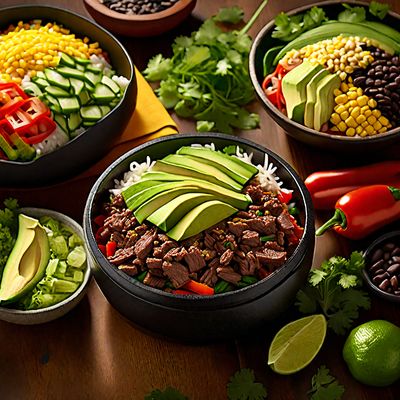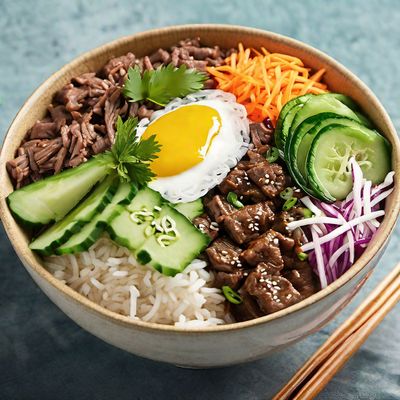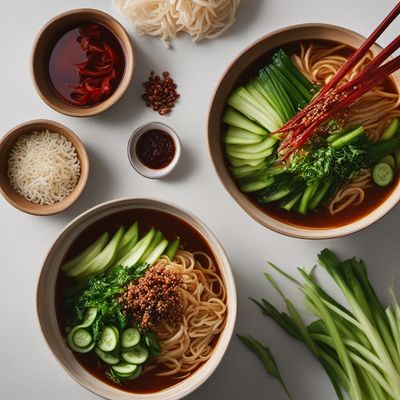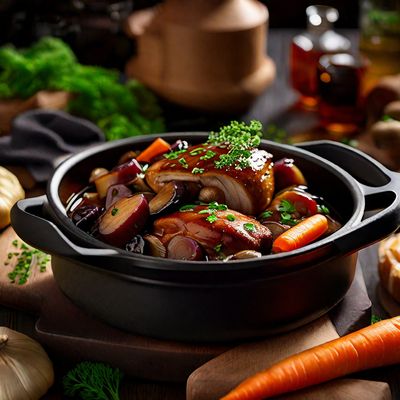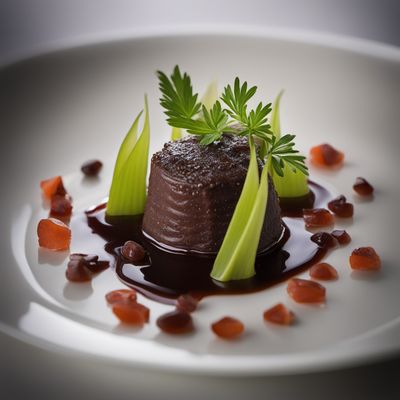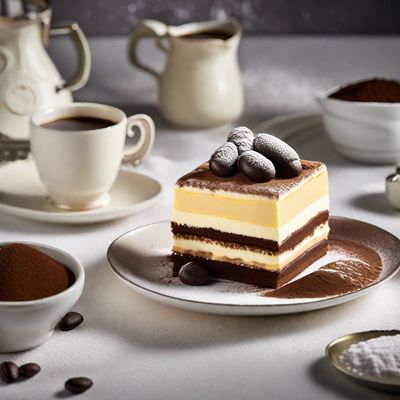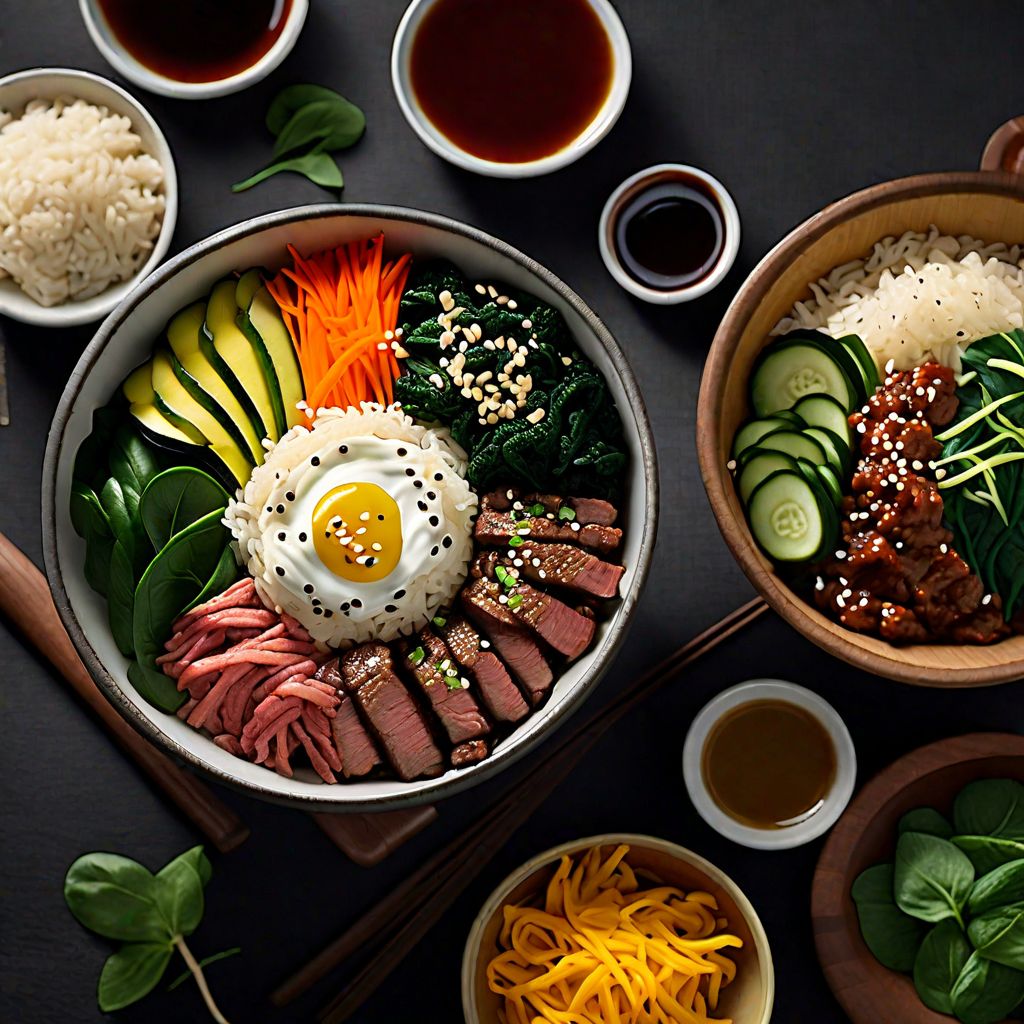
Recipe
Haute Cuisine Bibimbap
Elevated Bibimbap: A Haute Cuisine Twist on a Korean Classic
4.9 out of 5
In the realm of haute cuisine, even traditional dishes like Bibimbap can be transformed into culinary masterpieces. This elevated version of Bibimbap takes inspiration from the Korean original and adds a touch of sophistication, creating a dish that is both visually stunning and bursting with complex flavors.
Metadata
Preparation time
30 minutes
Cooking time
15 minutes
Total time
45 minutes
Yields
4 servings
Preparation difficulty
Medium
Suitable for
Gluten-free, Dairy-free, Nut-free, Low-carb, High-protein
Allergens
Soy, Eggs, Wheat
Not suitable for
Vegan, Vegetarian, Paleo, Keto, Halal
Ingredients
While the essence of Bibimbap remains intact, this haute cuisine adaptation focuses on refining the presentation and elevating the flavors. The ingredients are carefully selected and prepared with precision, and the dish is presented in an artful manner, showcasing the vibrant colors and textures. Additionally, the flavors are enhanced with the use of premium ingredients and delicate sauces, taking this dish to a whole new level of gastronomy. We alse have the original recipe for Bibimbap, so you can check it out.
-
200g (7 oz) Wagyu beef, thinly sliced 200g (7 oz) Wagyu beef, thinly sliced
-
150g (5.3 oz) foie gras, sliced 150g (5.3 oz) foie gras, sliced
-
4 quail eggs 4 quail eggs
-
1 cup (200g) sushi rice 1 cup (200g) sushi rice
-
1 carrot, julienned 1 carrot, julienned
-
1 zucchini, julienned 1 zucchini, julienned
-
1 cup (150g) shiitake mushrooms, sliced 1 cup (150g) shiitake mushrooms, sliced
-
1 cup (150g) bean sprouts 1 cup (150g) bean sprouts
-
1 cup (150g) spinach 1 cup (150g) spinach
-
4 tablespoons sesame oil 4 tablespoons sesame oil
-
4 tablespoons soy sauce 4 tablespoons soy sauce
-
2 tablespoons gochujang (Korean chili paste) 2 tablespoons gochujang (Korean chili paste)
-
2 tablespoons rice vinegar 2 tablespoons rice vinegar
-
Salt and pepper to taste Salt and pepper to taste
Nutrition
- Calories (kcal / KJ): 550 kcal / 2300 KJ
- Fat (total, saturated): 35g, 12g
- Carbohydrates (total, sugars): 30g, 3g
- Protein: 30g
- Fiber: 5g
- Salt: 2g
Preparation
-
1.Cook the sushi rice according to package instructions.
-
2.Heat 2 tablespoons of sesame oil in a pan over medium heat. Sauté the carrots, zucchini, mushrooms, bean sprouts, and spinach separately until tender. Season each with salt and pepper.
-
3.In a separate pan, sear the Wagyu beef slices for 1-2 minutes on each side. Set aside.
-
4.In the same pan, sear the foie gras slices for 30 seconds on each side. Set aside.
-
5.Fry the quail eggs sunny-side-up in a non-stick pan.
-
6.In a small bowl, mix together the soy sauce, gochujang, rice vinegar, and 2 tablespoons of sesame oil to make the sauce.
-
7.Assemble the dish by placing the sushi rice in the center of a large plate. Arrange the sautéed vegetables, Wagyu beef, foie gras, and quail eggs around the rice.
-
8.Drizzle the sauce over the ingredients or serve it on the side.
-
9.Serve immediately and mix all the ingredients together before eating.
Treat your ingredients with care...
- Wagyu beef — Ensure the beef is thinly sliced for quick and even cooking.
- Foie gras — Sear the foie gras briefly to maintain its delicate texture.
- Quail eggs — Handle the eggs gently to avoid breaking the yolks.
- Gochujang — Adjust the amount of gochujang according to your desired level of spiciness.
- Rice vinegar — Use a high-quality rice vinegar for the best flavor.
Tips & Tricks
- For an extra touch of luxury, garnish the dish with edible flowers or microgreens.
- Experiment with different vegetables and proteins to create your own unique haute cuisine Bibimbap.
- If you can't find Wagyu beef, you can substitute it with high-quality beef tenderloin.
- To save time, prepare the vegetables and sauce in advance and assemble the dish just before serving.
- Serve the Bibimbap in individual bowls for an elegant presentation.
Serving advice
Serve the Haute Cuisine Bibimbap immediately after mixing all the ingredients together. The flavors and textures are best enjoyed when the dish is still warm.
Presentation advice
Arrange the colorful ingredients in a visually appealing manner, creating a vibrant and artistic presentation. Consider using elegant plating techniques to showcase the different components of the dish.
More recipes...
For Bibimbap » Browse all
For Korean cuisine » Browse all
More Korean cuisine dishes » Browse all

Gyeongdan
Gyeongdan are a type of Korean rice cake made with glutinous rice flour and filled with sweet bean paste. They are often served as a dessert or snack.
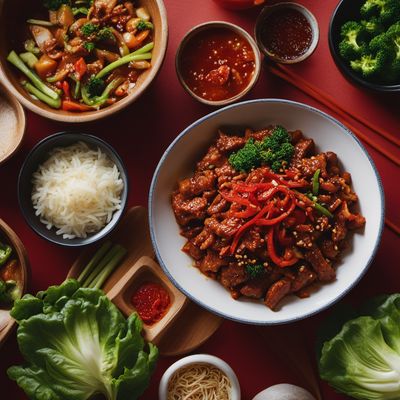
Gochujang bokkeum
Spicy Stir-Fried Meat and Vegetables
Gochujang bokkeum, also known as stir-fried spicy pork, is a Korean dish. It is made with pork, vegetables, and a spicy sauce made with gochujang.

Chonggak kimchi
Chonggak kimchi is a traditional Korean side dish made with young radishes. It is a spicy and sour dish that is often served with rice and other...
